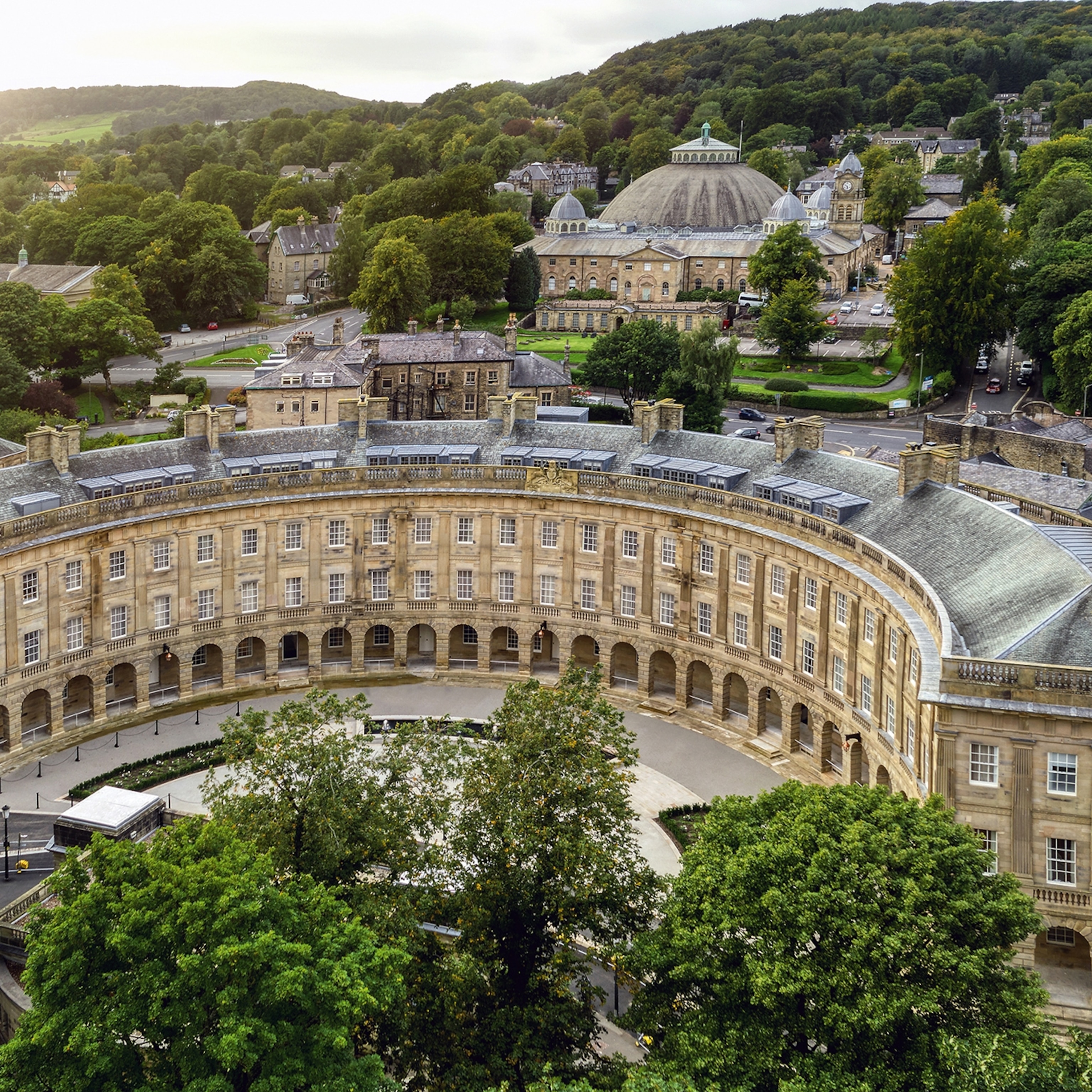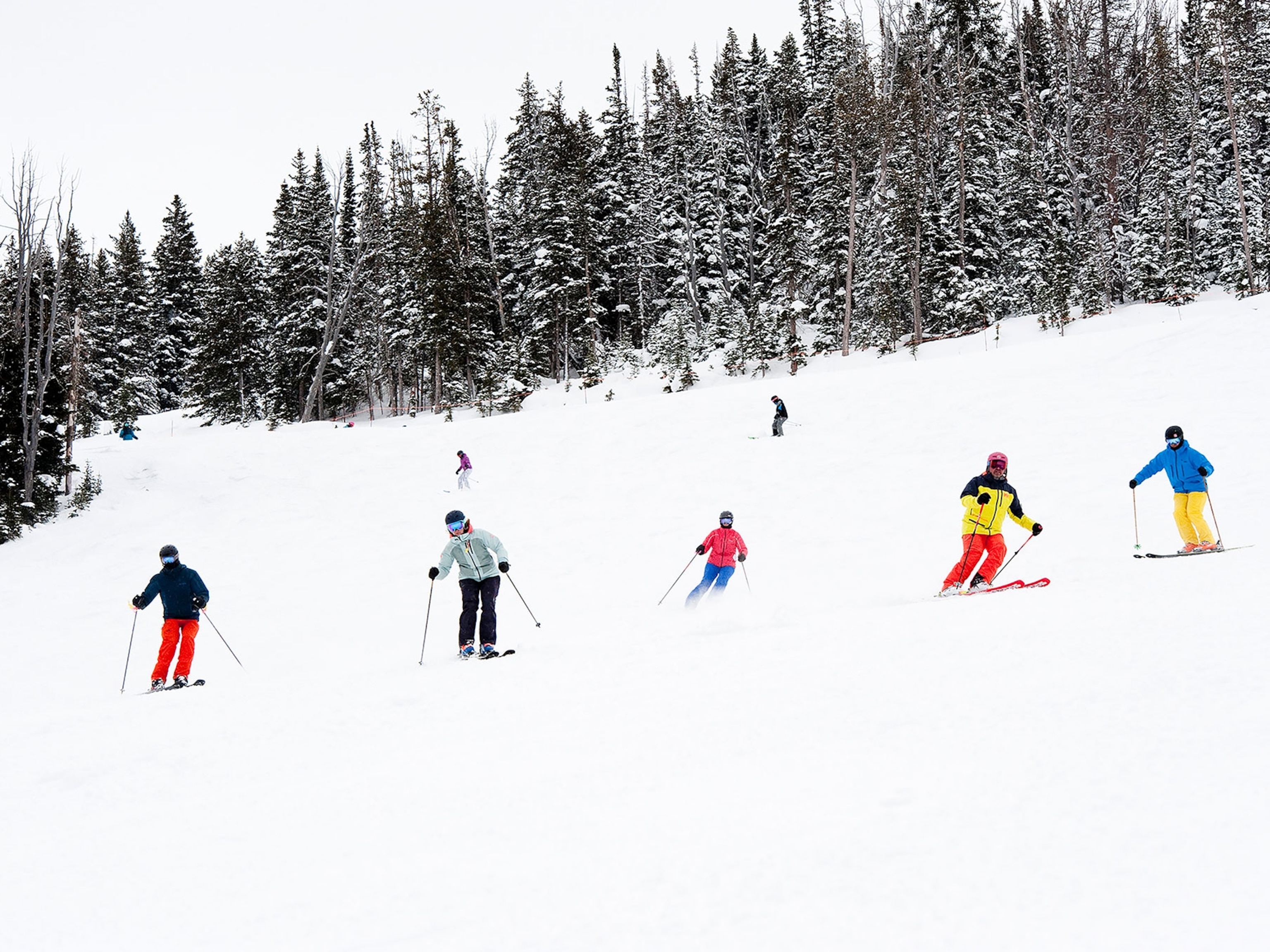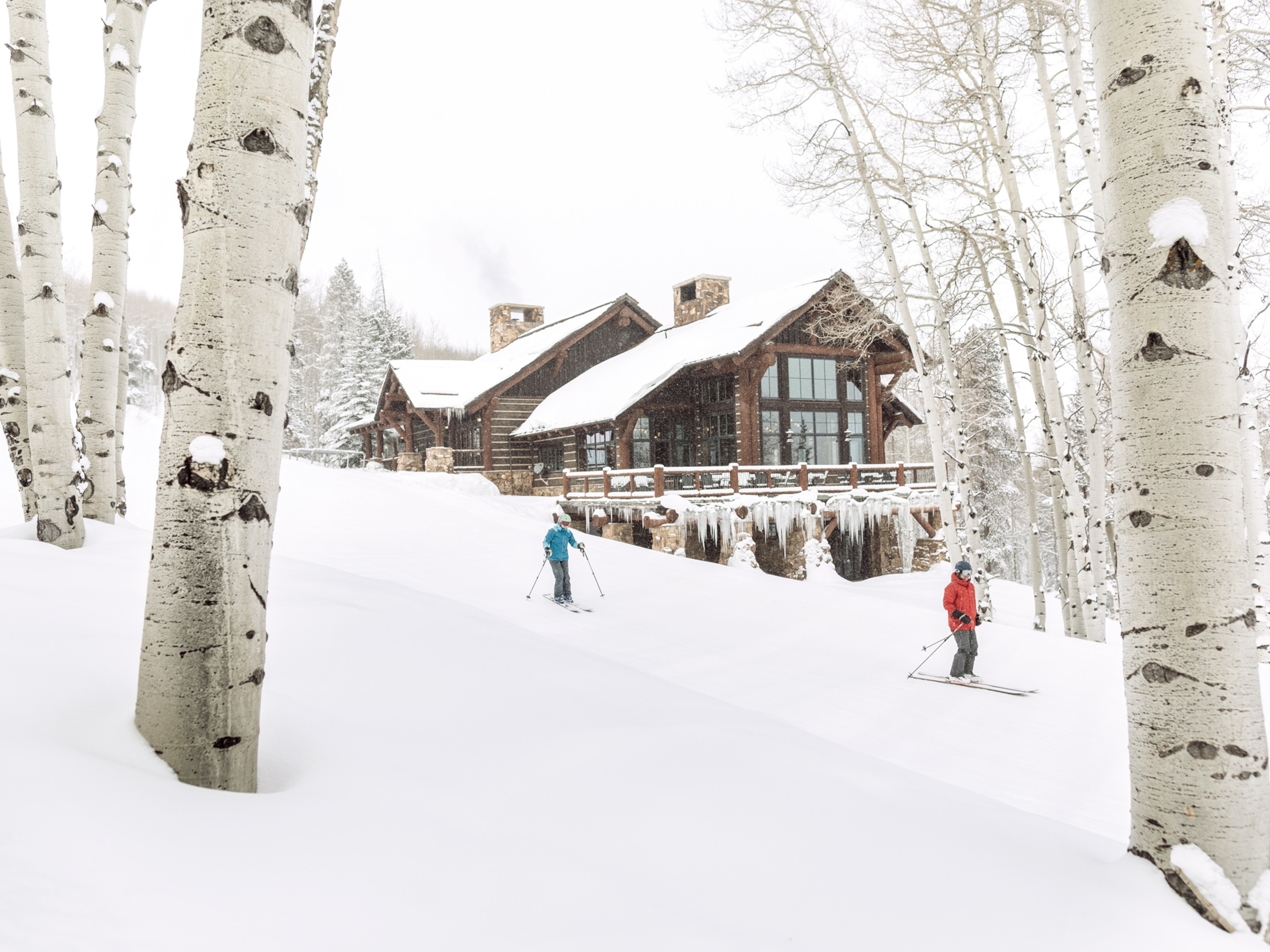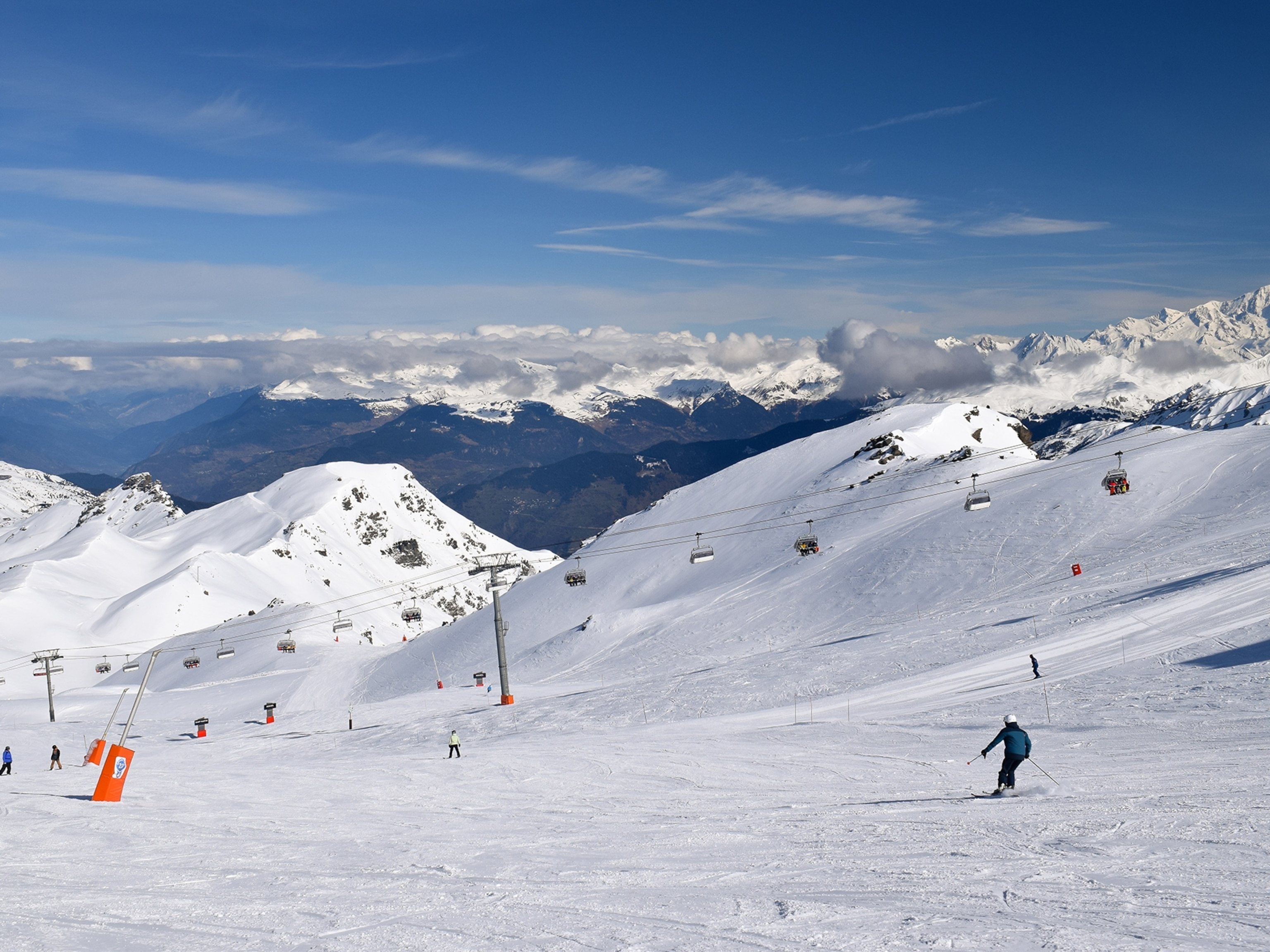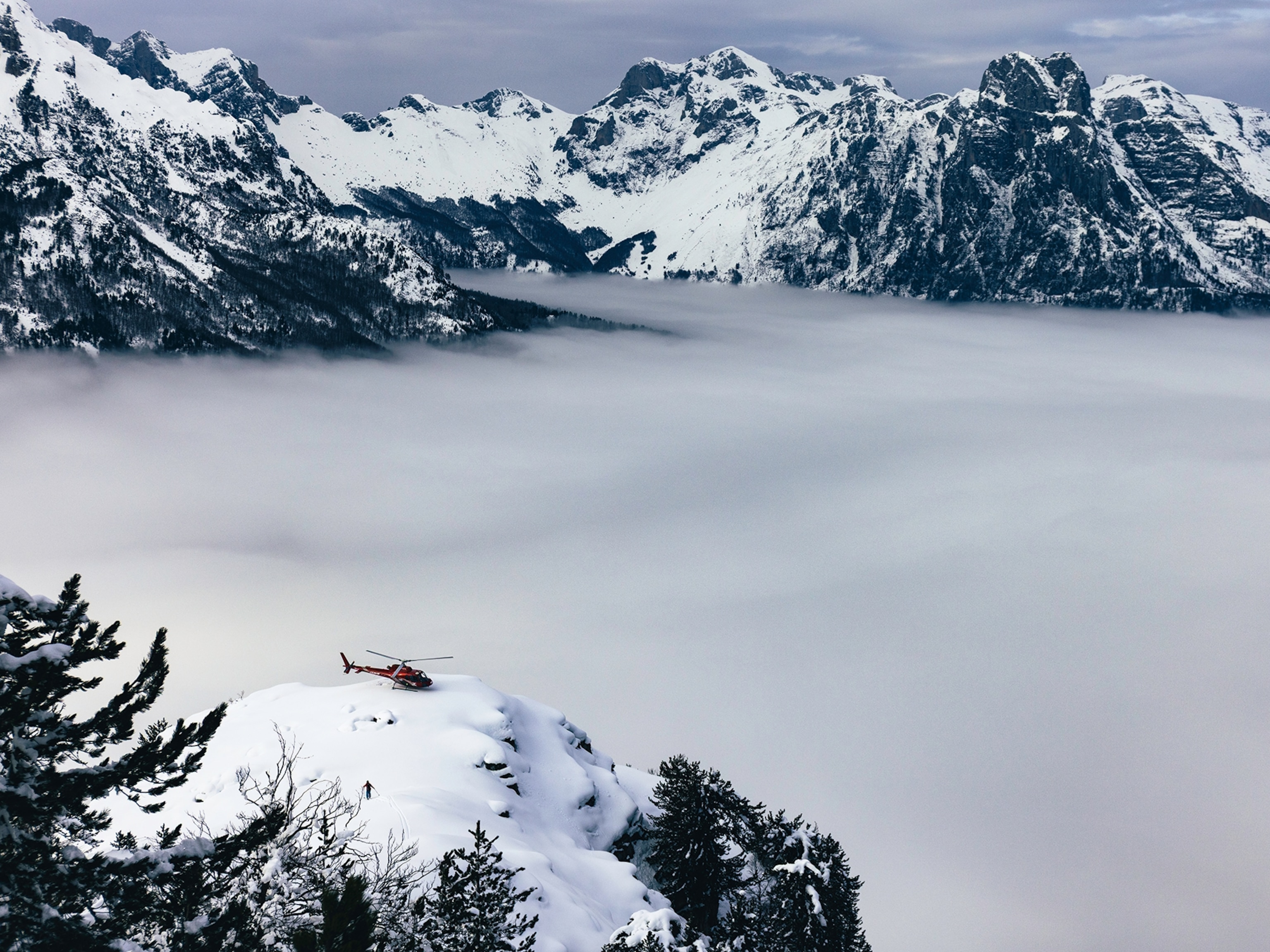
From the mountains to the sea in Georgia
From river rafting to mountain trekking, Georgia’s diverse ecosystems make for a wealth of adventuring options.
With a richly diverse natural landscape—from the vertiginous mountain peaks of the Caucasus to the balmy rainforests of the Black Sea-fronted Adjara region—the country of Georgia offers travelers a staggering variety of dramatic vistas to choose from, along with an equally diverse selection of countryside accommodations. Whether you’re an intrepid outdoorsy type looking to spend a week camping and trekking along the Chaukhi Pass between the regions of Kazbegi and Khevsureti, or you prefer a lower key adventure for an afternoon day trip from Tbilisi, Georgia’s capital, the country has an abundance of outdoor opportunities for every fitness level and preference.
Here are our top choices for how to best enjoy Georgia’s nature—all year round.
1. Hike the Georgian Mountains
No trip to Georgia is complete without a visit to one of the country’s many mountain regions nestled in the shadow of the Greater Caucasus. Each of these destinations has a variety of walking and hiking trails, from the gentle to the arduous. If you only have a day or two to explore the mountains, head to Kazbegi, just three hours’ drive from Tbilisi, for a simple half-day hike: outside the town center a narrow dirt road snakes up a wildflower-covered hill en route to the Gergeti Trinity Church. Or take the overnight train to Zugdidi and the jump in a local marshrutka (minivan taxi) to Mestiain the popular Svaneti region, from which you can embark upon a four-day trek to Ushguli, said to be the highest continuously inhabited village in Europe. If you have more time, however, consider a multi-day visit to a more remote and less developed region like Tusheti or Khevsureti, where you can spend the night in one of the region’s converted medieval stone towers or drinking warming chacha, a Georgian brandy, around a roaring fire.
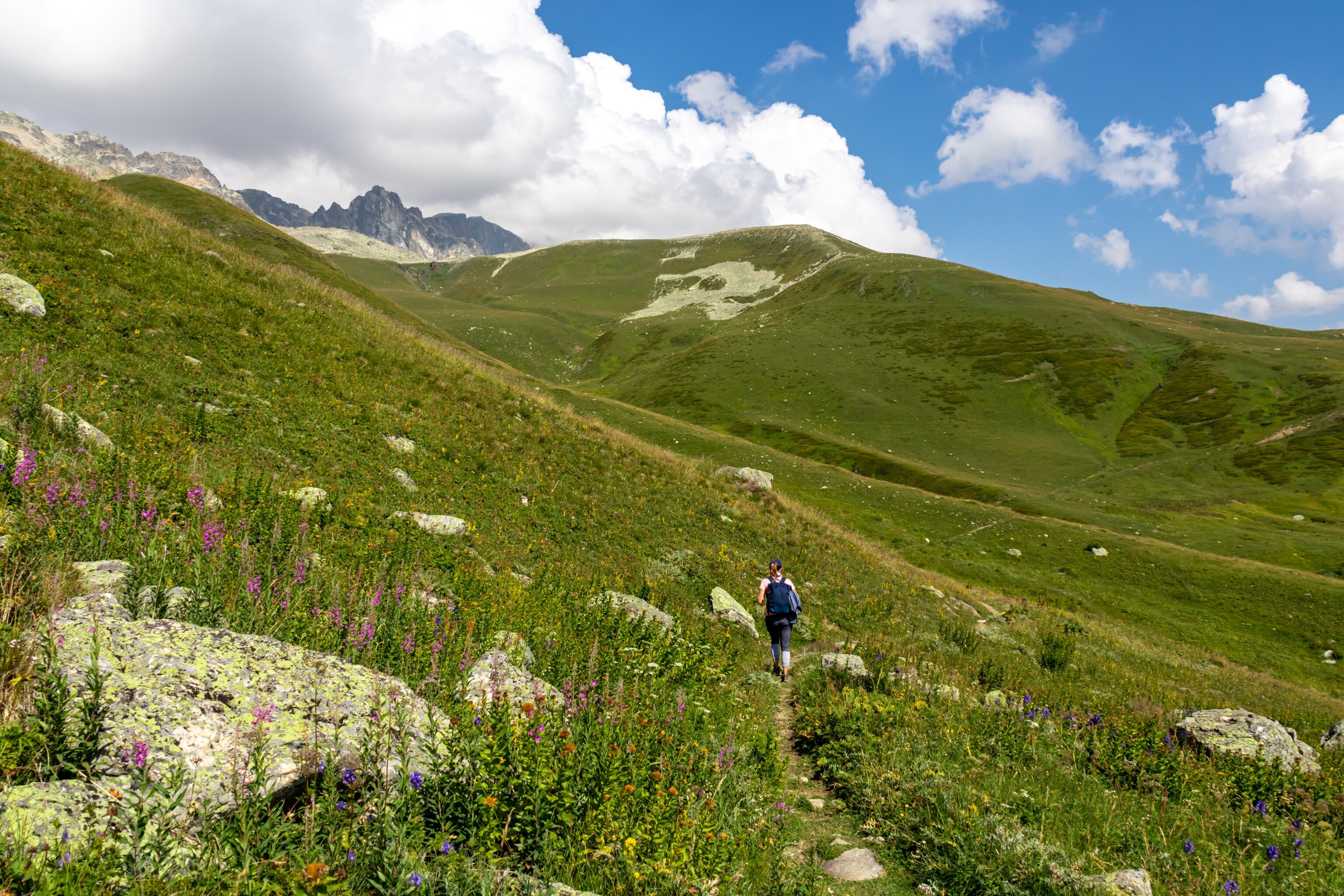

2. Hit the Slopes in One of the Georgia’s Many Resorts
While the arrival of Georgia’s winter snows signal the end of the trekking season, they also signals that it’s time for Georgia’s ski resorts to kick into high gear. There are ski resorts all across the country, from Gudauri, near Kazbegi, to Goderdzi, three hours from the Black Sea city of Batumi, to Hatsvali and Tetnuldi in the mountains of Svaneti. For skiers looking for a luxury experience, the recently opened Rooms Hotel Kokhta near the Bakuriani Ski Resort offers a modern industrial-chic vibe and “ski to door” access. Travelers looking for something a bit more remote should consider backcountry Cat skiing in Bakhmaro, an alpine village of wooden cabins and powdery slopes. Famous across the country for the rumored healing properties of both its fresh air and its climate, the village of Bakhmaro has been a beloved resort town since the late 19th century.
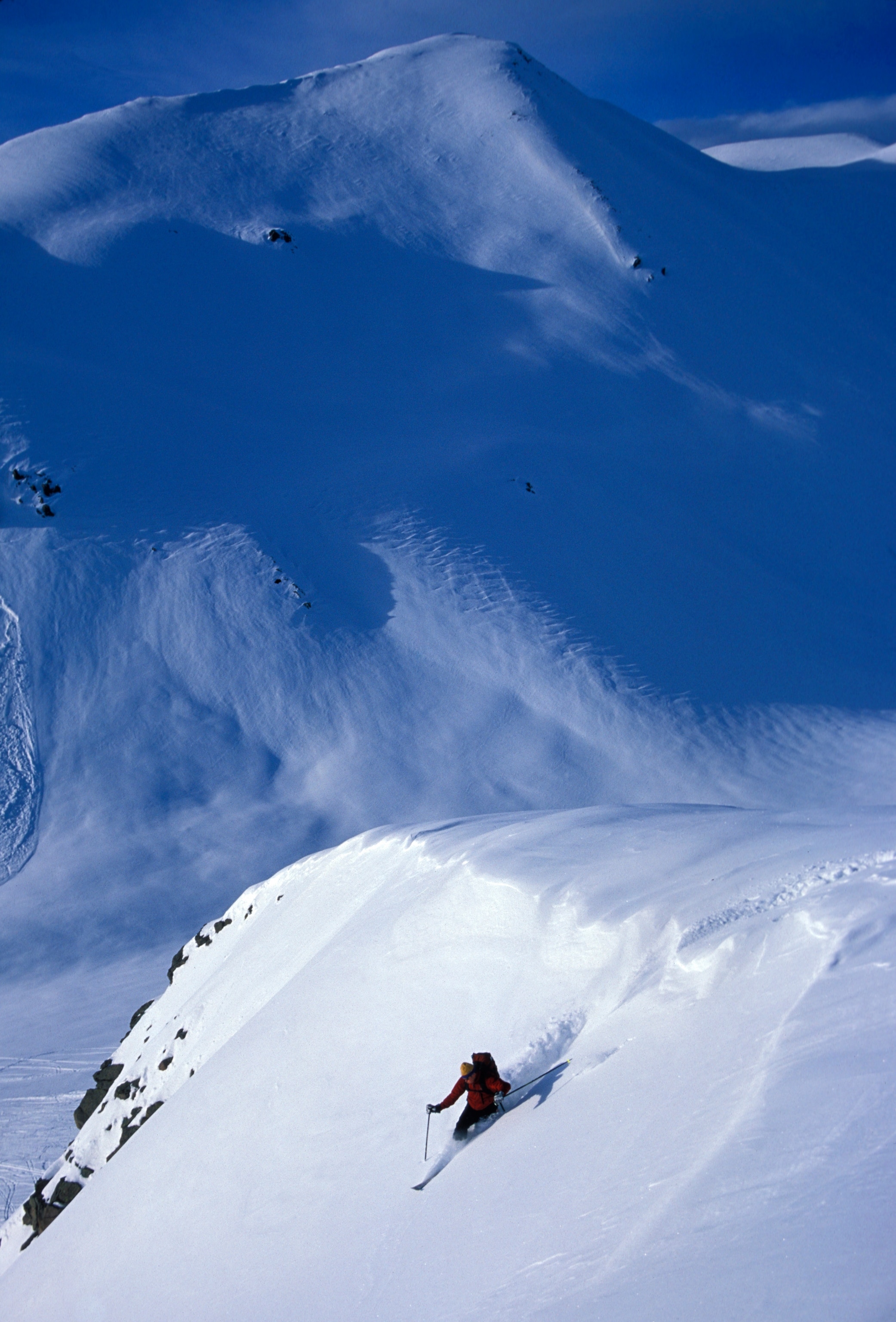
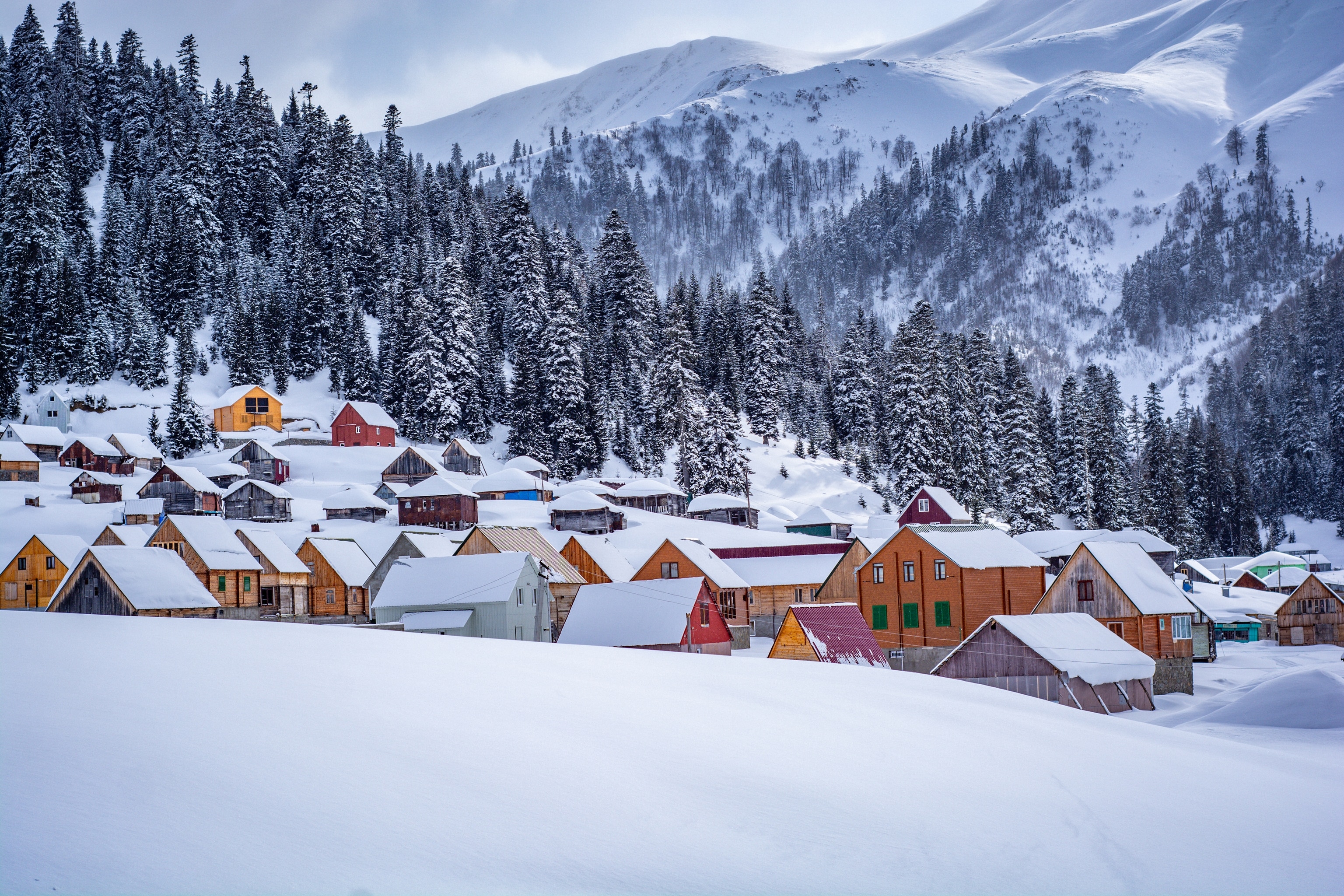
3. Horseback Ride in One of Georgia’s National Parks
Horseback riding is a popular pastime in the Georgian countryside, and horses can be rented from stables in nearly all of Georgia’s national parks and rural resorts. For a day or overnight trip, some of the best and most scenic riding in Georgia can be found in the country’s eastern wine region of Kakheti, which is also home to two of Georgia’s most panoramic national parks, Vashlovani and Lagodekhi. If you have a passion for stark and dramatic landscapes, head to the desert steppes of Vashlovani, where you might even spot gazelles. If you prefer, instead, to wander through densely forested territory, Lagodekhi, where winding paths flanked by maple trees lead to a series of stunning waterfalls, fits the bill perfectly.
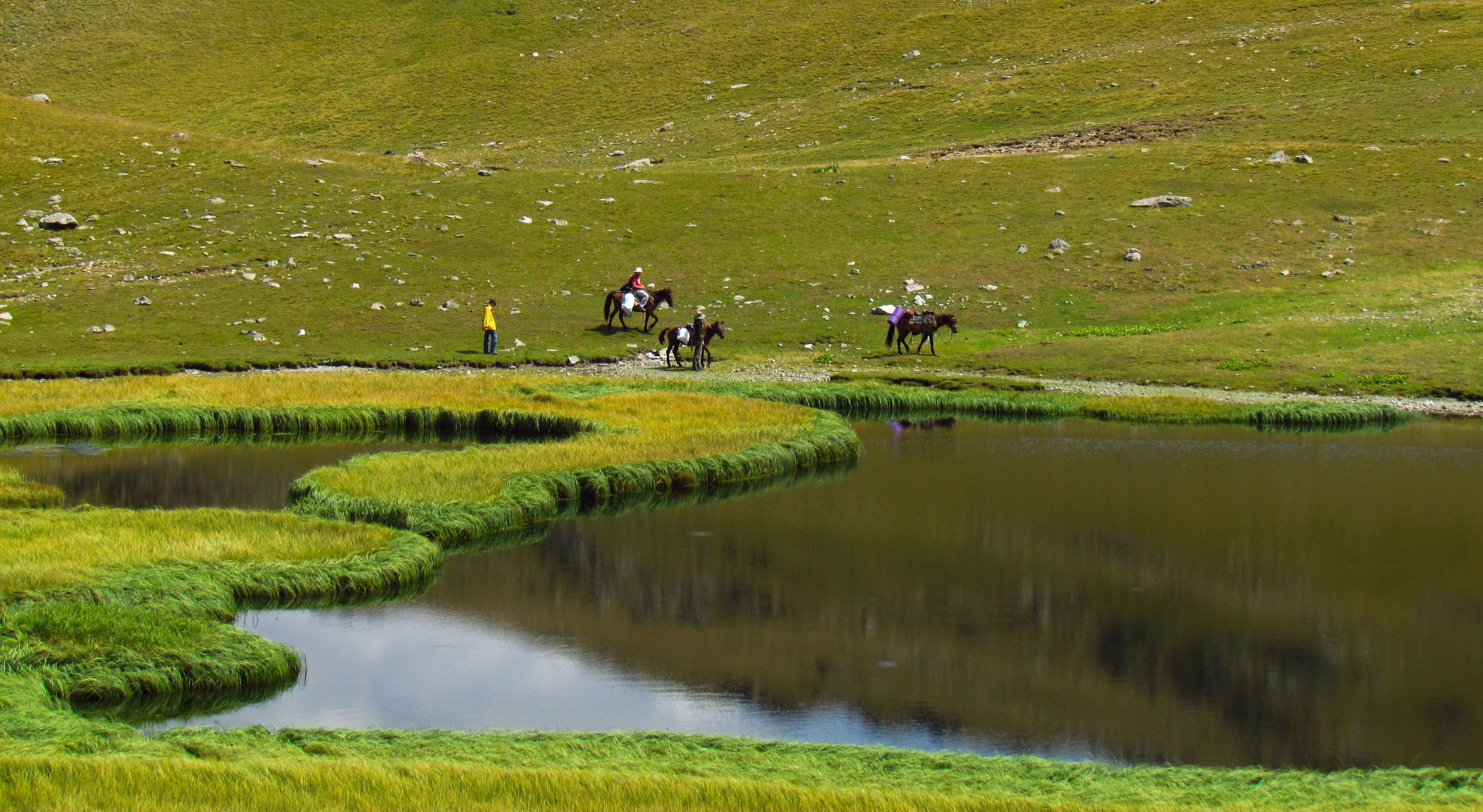
4. Whitewater Rafting along the Rioni River
In recent years, western Georgia has experienced something of a tourism boom, with travelers flocking to the ancient churches and even more ancient caves—including the stunning 1,400-meter-long Prometheus Cave—near the city of Kutaisi, Georgia’s second largest city. The legendary site, at least according to Georgians, of the eternal punishment of the Greek god whose name it bears, the cave today is accessible by both foot and an atmospheric guided boat tour. Among the most popular tourism activities along the Rioni River, which flows through Kutaisi, is whitewater rafting. Private outfitters offer local whitewater rafting tours, both from near Kutaisi itself and from the nearby alpine region of Racha.
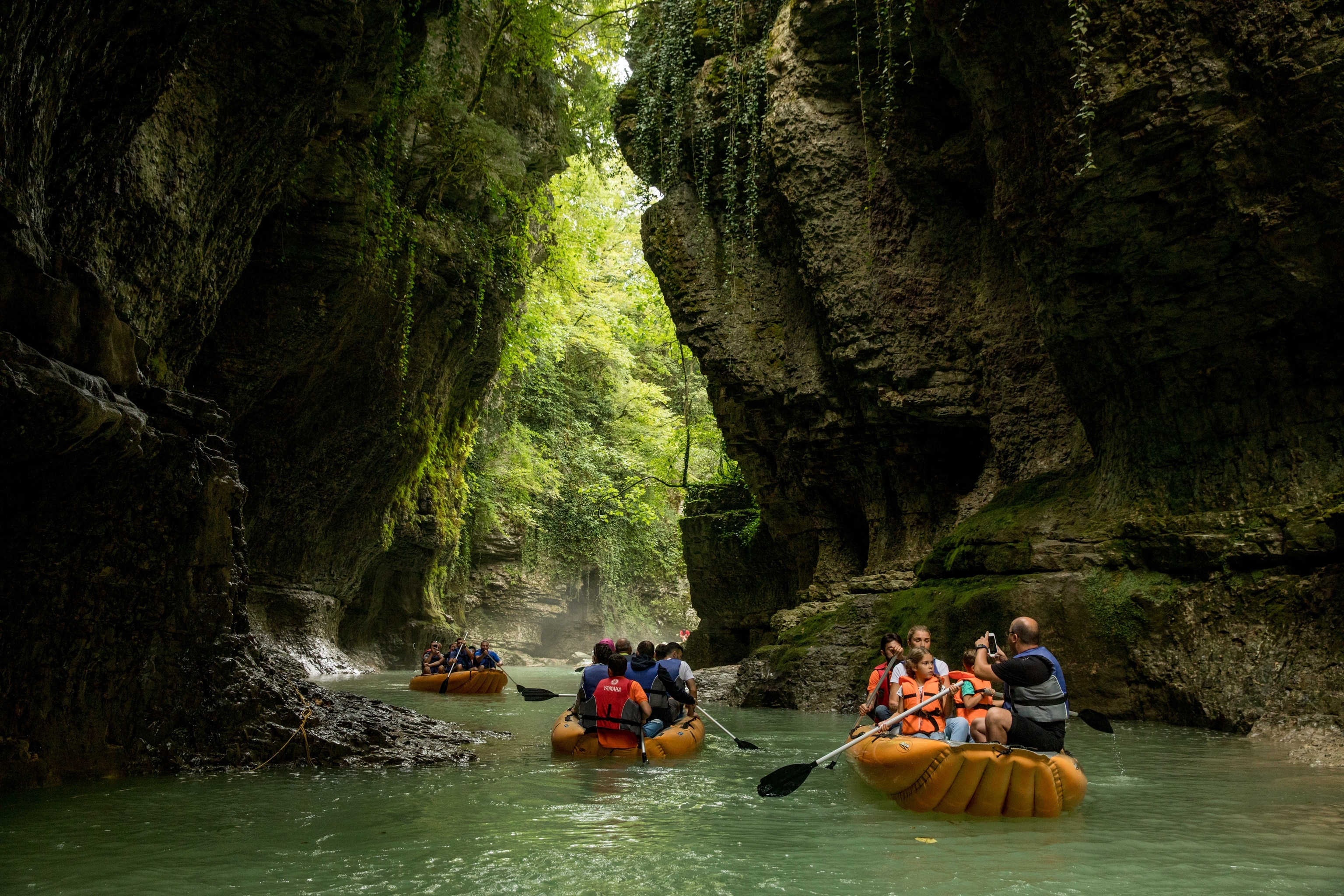
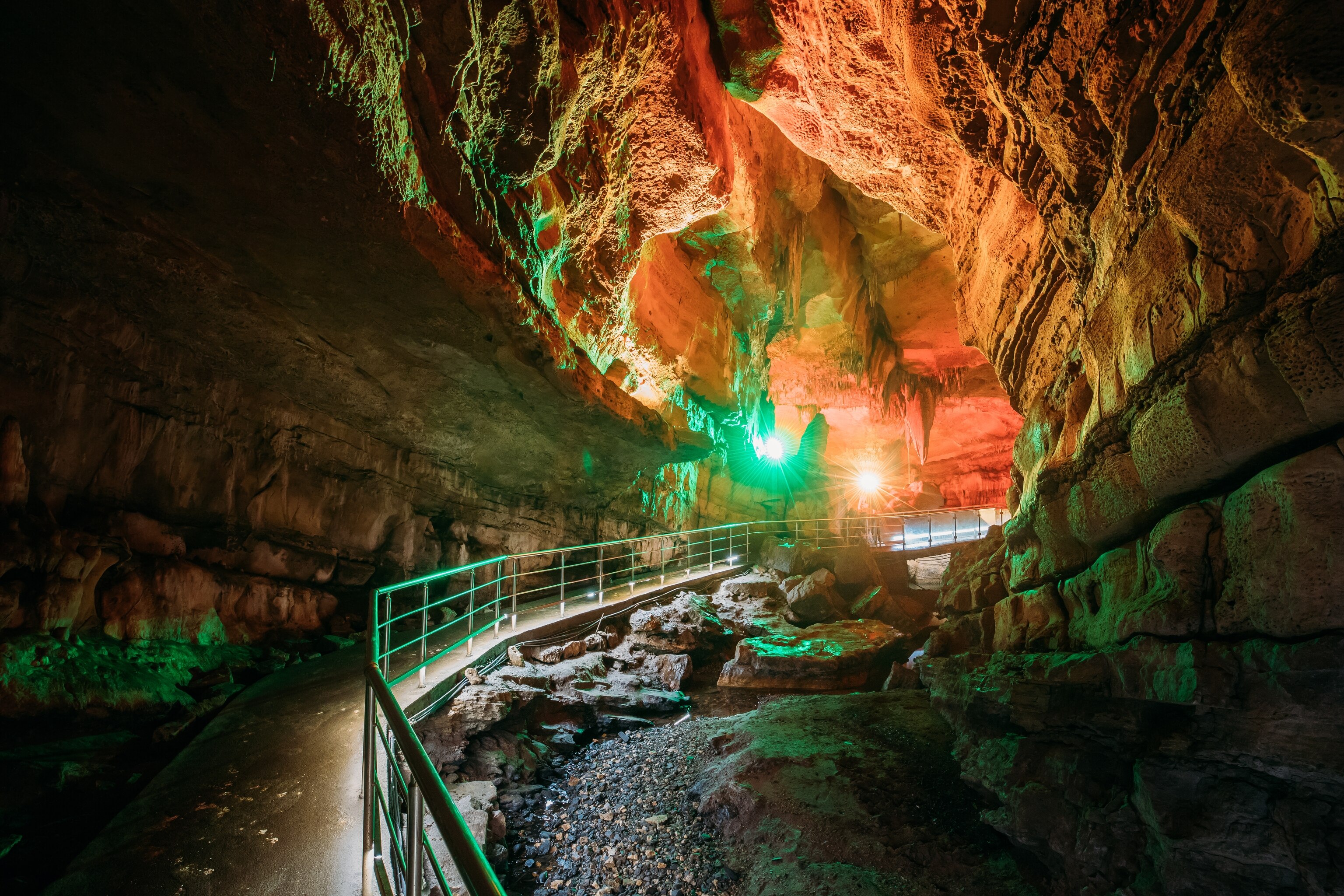
5. Get in the Water in Adjara
Although Georgia is most famous for its mountains, it also has a stunning coastline―the tropical Adjara region, with its deep-green trees and sunny rock beaches, borders the Black Sea. While the raucous city of Batumi—known for its nightlife—is among the most popular of Adjara’s attractions, the quieter beaches of the Adjara countryside, especially both Gonio and Tsikhisdziri, offer the chance to experience a more remote version of the Georgia seaside. There’s plenty to do for the terrestrially inclined as well: just 30 minutes from Batumi’s city center, the Batumi Botanical Garden at Mstvane Konskhi (Green Cape) offers more than 100 hectares of winding seafront trails and extravagantly beautiful flora.
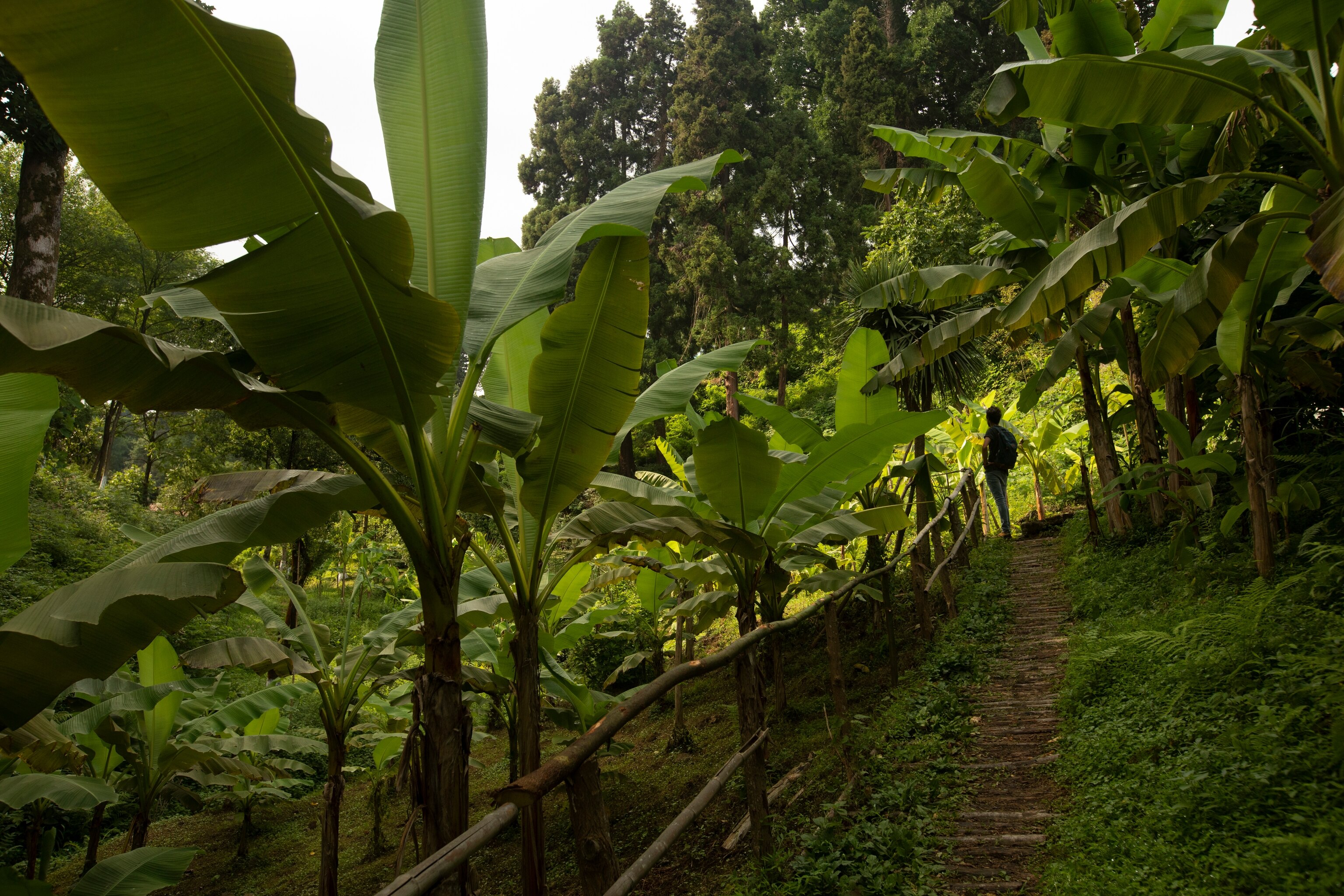
There are three major international airports in Georgia―Tbilisi International Airport in Georgia’s capital; Kutaisi International Airport in the west Georgia regional capital Imereti (ideal, also, for access to Samegrelo and Racha); and Batumi International Airport in Batumi on the Black Sea, Two smaller regional airports serve travelers in Ambrolauri (Racha region) and Mestia (Svaneti region). Batumi and Kutaisi are also both connected to Tbilisi by regular train service, and a robust bus and marshrutka (minibus) network also connects both regional hubs and smaller villages.
At National Geographic, we want to inspire your next adventure but only when it is safe and advised to do so. Before you travel, check local and national Government guidelines for Covid-19.
